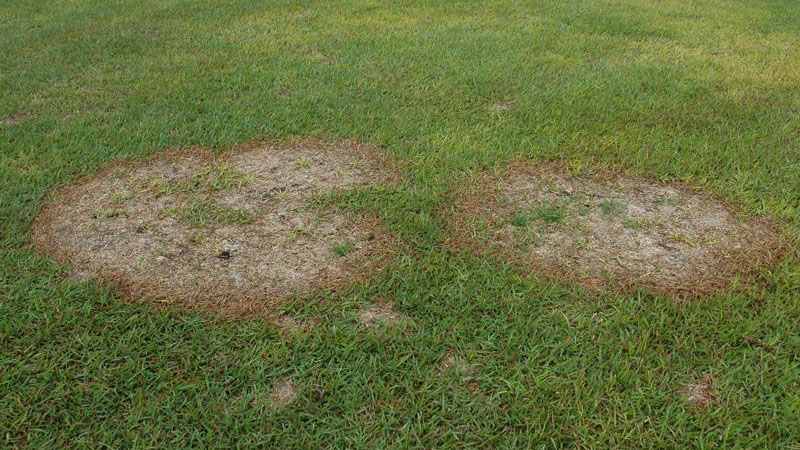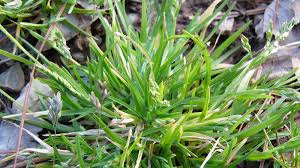Winter Lawn Care
go.ncsu.edu/readext?756727
en Español / em Português
El inglés es el idioma de control de esta página. En la medida en que haya algún conflicto entre la traducción al inglés y la traducción, el inglés prevalece.
Al hacer clic en el enlace de traducción se activa un servicio de traducción gratuito para convertir la página al español. Al igual que con cualquier traducción por Internet, la conversión no es sensible al contexto y puede que no traduzca el texto en su significado original. NC State Extension no garantiza la exactitud del texto traducido. Por favor, tenga en cuenta que algunas aplicaciones y/o servicios pueden no funcionar como se espera cuando se traducen.
Português
Inglês é o idioma de controle desta página. Na medida que haja algum conflito entre o texto original em Inglês e a tradução, o Inglês prevalece.
Ao clicar no link de tradução, um serviço gratuito de tradução será ativado para converter a página para o Português. Como em qualquer tradução pela internet, a conversão não é sensivel ao contexto e pode não ocorrer a tradução para o significado orginal. O serviço de Extensão da Carolina do Norte (NC State Extension) não garante a exatidão do texto traduzido. Por favor, observe que algumas funções ou serviços podem não funcionar como esperado após a tradução.
English
English is the controlling language of this page. To the extent there is any conflict between the English text and the translation, English controls.
Clicking on the translation link activates a free translation service to convert the page to Spanish. As with any Internet translation, the conversion is not context-sensitive and may not translate the text to its original meaning. NC State Extension does not guarantee the accuracy of the translated text. Please note that some applications and/or services may not function as expected when translated.
Collapse ▲Over the past several weeks the N.C. Cooperative Extension of Pamlico County office has had numerous calls related to winter lawn care with several reoccurring pest and management issues. Let’s discuss a few of these issues that need to be addressed right now.
Large Patch Disease
Large Patch is a fungal disease that creates circular areas of dead or dying grass in centipede, zoysia, and St. Augustine grass. These circular areas form when soil temperatures fall below 70 degrees Fahrenheit in the fall. Development of large patch disease in St. Augustine can also occur earlier in late summer. Circular areas that form are often ringed by yellowing grass. If you pull on the leaves of this yellowing grass, it usually slips easily from the sheath leaving. Bermudagrass is less affected by this disease than other grasses, as it typically out grows the infection. Large Patch development is favored by wet and cool soil conditions, either from rain, poor drainage, or excess irrigation. Weather conditions over the past several weeks have been ideal for large patch development, and it can be seen over many areas in Pamlico County.
Control involves correcting drainage issues and preventative applications of fungicide. For those areas currently exhibiting large patch development, a targeted fungicide application will help protect surrounding grass from infection. Widespread fungicide applications to the entire yard are usually not recommended. Map these current locations so you can find them as the grass goes dormant and turns brown, and prepare to make an additional fungicide application in the spring. Areas that turned brown during the winter will reappear as the grass greens up in the spring. It may take most of the summer for these areas to recover and fill back in from runners. For a list of recommended fungicides, visit the NC State Extension TurfFiles website and review the disease note on Large Patch.
Winter Weeds
Most of our winter annuals have germinated and have been growing for the past month. Some winter annuals like Poa annua (Annual Bluegrass) may still be small and unrecognizable, but is still growing. Winter weeds can either be annual or perennial but they all prefer cooler growing conditions. These winter weeds compete with dormant turfgrass for sunlight, nutrients, and water when our turfgrass is at its weakest. If you would like to control these weeds, then now is the time to act. If you wait until spring, these weeds will be much more difficult to control. Most of our winter weeds are broadleaf plants and can be controlled with a common mixture of 3 or 4 broadleaf herbicides. Examples of these include products such as Ortho Weed-B-Gone, Trimec Southern, and Speedzone Southern. No single herbicide application will control all your weeds, so it’s important to read your product label carefully. First, identify the weeds in your yard and then choose a product that will provide control. If you are not sure what weeds you have, then review the weeds section on the NC State Extension Turffiles website. This website will provide descriptions, photographs, and recommendations for control of many turf weeds. Always read and follow the label directions when using pesticides. Also, read the directions and use the correct application rate because too much of an herbicide may cause injury and not every turfgrass is treated at the same rate. Also, pay attention to when the product can be applied and how often. Some products require at least 30 days between applications and limitations exist during spring green-up. If you have doubts, it’s always best to ask for help or hire a professional.
Turf Remediation
If you have bare spots or poor growth areas in your turf, now is the time to think about why this occurred. Turfgrass needs full sunlight, proper drainage, and appropriate soil fertility to grow. Now is a good time to take a soil sample and see if any nutrients are lacking and if soil pH needs to be adjusted. Now is not the time to try and replant. Wait until spring before trying to plant seed. Warm-season grasses like Bermuda, centipede, zoysia, and St. Augustine can be planted from April through July. If warm weather is early, then late March may also provide an opportunity for planting. Trying to seed these grasses in winter will result in failure. Cool-season grasses like fescue and bluegrass are not recommended as turfgrass in Pamlico County because our warm summers are simply too hot for these grasses to grow well.
If you have any questions, please contact Daniel Simpson at daniel_simpson@ncsu.edu.





